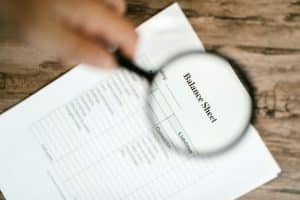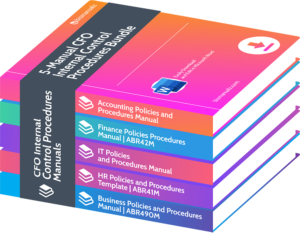How to Prepare a Balance Sheet

To understand how to prepare a balance sheet, delve into the definition of a balance sheet and the importance of preparing one. These sub-sections will shed light on the core concepts and underlying significance of this fundamental financial statement.
Definition of a Balance Sheet
A balance sheet is a financial statement that gives stakeholders a glimpse at a company’s assets, liabilities, and shareholders’ equity. It is a mix of numbers, equations, and figures that shows what the business owns and how much it owes to others.
It is not only an accounting tool, but a way to view the soul of an enterprise – including intangible things like brand value and goodwill. Imagine a business owner looking over their balance sheet. The pressure of responsibility is felt as they weigh up cash and debts. This example shows how important a well-prepared balance sheet is in making smart business decisions.
Importance of preparing a balance sheet
Prepare a balance sheet – it’s key for businesses! It offers a financial view of the firm and provides guidance for decision-making. Examining assets, liabilities, and equity, this balance sheet enables a precise financial assessment. This helps to assess profitability and solvency.
It also assists investors, lenders, and partners in recognizing a business’s financial stability and possible development. Without this balance sheet, businesses miss potential expansion options and face unexpected financial troubles. Make sure your business succeeds by prioritizing the generation of a detailed and correct balance sheet.
Gathering Financial Information
To gather the necessary financial information for preparing a balance sheet, you need to collect data on assets, liabilities, and equity. This enables you to accurately assess your company’s financial standing and make informed decisions. By understanding the process of gathering data on these components, you can ensure a comprehensive and accurate balance sheet.
Collecting data on assets
Gathering financial info about assets requires collecting data about various elements associated with them. This knowledge is necessary for making sound decisions and gauging the worth of an individual’s or organization’s assets.
To acquire data on assets, include details relevant to the asset being evaluated. This includes details like the type of asset, its current value, any obligations linked to it, and its depreciation rate over time. Plus, any revenue generated from the asset should also be included in the data collection process.
To arrange and analyze this data, create a table with relevant columns that capture all the information needed. The table can give a clear idea of the different assets, their values, liabilities, and other related facts in a concise way.
It’s important to know that gathering data on assets has become easier with technology, yet this process has been a core part of financial analysis for years. Accurate and inclusive data collection is essential to understanding an individual or organization’s financial situation.
In conclusion, data gathering on assets means collecting info regarding various elements related to these assets. By organizing the data properly using tables or other efficient methods, individuals and organizations can gain valuable insights into their financial condition.
Collecting data on liabilities
Creating a table is a great way to organize liabilities data. Columns such as “Liability Type,” “Amount Owed,” “Interest Rate,” and “Repayment Term” can be added. This will help in understanding financials better.
Categorizing liabilities into different types will make analyzing and prioritizing repayments easier. The “Amount Owed” column gives an overview. The “Interest Rate” column shows interest charged. The “Repayment Term” displays when liabilities must be cleared.
Verifying liability data from reliable sources (ex. financial statements, loan agreements, credit reports, invoices) is important. Updating this information in a systematic way can help keep an accurate record of liabilities.
Organizing liabilities based on urgency and potential impact is vital in creating effective repayment plans. Prioritizing high-interest debts or those with due dates will help reduce costs and avoid penalties.
Regularly reviewing and analyzing liability data gives insight into debt patterns or cost reduction areas. It is helpful for making decisions on refinancing or negotiating terms with creditors.
Collecting data on equity
| Company Name | No. of Shares | Market Value (per share) | Ownership Percentage |
|---|---|---|---|
| ABC Inc. | 100,000 | $50 | 10% |
| XYZ Corp. | 200,000 | $75 | 20% |
| DEF Co. | 150,000 | $60 | 15% |
To get data on equity, financial statements such as balance sheets and income statements are important. These documents show the financial health of a company and its equity structure. Data on equity is essential. It helps investors make informed decisions and companies to value and decide strategically.
A big event in equity data collection is electronic trading platforms. This made accessing and analyzing data more efficient and accessible.
Organizing the Balance Sheet
To effectively organize the balance sheet and ensure accuracy, utilize the following techniques for the “Organizing the Balance Sheet” section. Start by organizing the layout and format, then classify assets, liabilities, and equity. Finally, implement proper headings and subheadings for easy navigation and understanding.
Layout and format
Check out this awesome table of a perfect balance sheet!
| Assets | Amount (USD) | Liabilities | Amount (USD) |
|---|---|---|---|
| Cash | $100,000 | Accounts Payable | $50,000 |
| Accounts Receivable | $75,000 | Loans Payable | $100,000 |
| Inventory | $50,000 | Equity | $125,000 |
The columns show the distinct assets and liabilities. This makes it easier to figure out the financial data.
You must make sure the balance sheet looks good. Here’s how:
- Use the right font size and type.
- Use headings and subheadings.
- Align the numbers.
- Color code or shade important figures.
- Add notes if necessary.
By doing this, you can create a neat balance sheet. It’ll contain all the information stakeholders need. A proper structure is crucial for a great balance sheet. Don’t forget it!
Classifying assets, liabilities, and equity
Assets, liabilities, and equity are the 3 basics of a balance sheet. These help organize financial info and give an idea of a firm’s financial situation. Assets are things like cash, accounts receivable, and property.
Liabilities refer to debts or obligations that need to be sorted – loans and accounts payable. Equity is the remaining interest after deducting liabilities, showing ownership and shareholder value. Here’s a look at how assets, liabilities, and equity are classified on a balance sheet:
| Assets | Liabilities | Equity |
|---|---|---|
| Cash | Loans | Capital |
| Accounts Receivable | Accounts Payable | Retained Earnings |
| Inventory | Expenses | Common Stock |
| Property | Income |
For organizing the balance sheet effectively, there are some unique details. Assets should be divided into current and non-current according to their liquidity. Liabilities can be short-term (due in 1 year) or long-term (due after 1 year). This helps to better understand the company’s finances.
Organizing the balance sheet gives stakeholders valuable info for making sound decisions about investments and partnerships. Source: Financial Accounting Standards Board (FASB).
Using proper headings and subheadings
Headings and subheadings are key when organizing a balance sheet. They help categorize and divide data, making it simple to search for details and analyze financial positions.
Look at this example table:
| Asset | Amount | Liability | Amount | Equity | Amount |
|---|---|---|---|---|---|
| Cash | $50,000 | Accounts Payable | $20,000 | Common Stock | $30,000 |
| Accounts Receivable | $70,000 | Loans Payable | $40,000 | ||
| Inventory | $100,000 | ||||
| Property, Plant & Equipment | $150,000 |
It’s easy to see each type of item has its own heading and subheading. This arrangement helps people understand the parts of the balance sheet. In addition, headings and subheadings reduce chaos and confusion. It makes it easier for people to quickly read and find information without becoming overwhelmed.
Take control and use this technique in your balance sheet organization. Benefit from improved financial reporting.
Calculating Totals and Preparing the Balance Sheet
To calculate totals and prepare the balance sheet for accurate financial reporting, utilize the following sub-sections as a solution: totaling asset values, totaling liability values, totaling equity values, and ensuring the balance of the sheet. Each sub-section plays a crucial role in presenting an accurate representation of your company’s financial position.
Totaling asset values
Let’s make a table to get a better handle on asset values. It’ll show us the different types and their worth. Look:
| Asset Type | Value |
|---|---|
| Cash | $50,000 |
| Accounts Receivable | $25,000 |
| Inventory | $100,000 |
| Property | $500,000 |
| Equipment | $250,000 |
Sum the values in each column and we have a total asset value of $925,000.
Totaling asset values is more than adding numbers. It demands looking at types and their evaluations. This guarantees accuracy when making the balance sheet.
In 2008, during the financial crisis, many companies lost money from their assets. This caused a decrease in total asset value, impacting their financial stability.
Calculating totals and making the balance sheet isn’t only about numbers. It gives us critical information about a company’s finances. By knowing asset values, businesses can make smart choices for investments, expansion and risk management.
Totaling liability values
Visualize the process by creating a table. It should have columns like Liability Type, Amount Owed, and Due Date. Populate the columns with the liabilities, amounts, and dates.
| Liability Type | Amount Owed | Due Date |
|---|---|---|
| Accounts Payable | $10,000 | June 30, 2022 |
| Loan Payable | $50,000 | December 15, 2023 |
| Taxes Payable | $15,000 | April 30, 2022 |
| Utility Bills | $5,000 | July 15, 2022 |
Structured information helps businesses understand their liabilities and prioritize payments. Accurate reporting and communication with stakeholders is easier.
Suggestions for effective totaling of liability values:
- Accurate records are a must. Update them regularly.
- Categorize liabilities according to nature.
- Use accounting software. Automate calculations and get real-time insights. Easily organize and retrieve data for balance sheet preparation.
By following these suggestions, businesses can total liability values quickly and prepare accurate balance sheets. This helps them make informed financial decisions and maintain a strong financial position.
Totaling equity values
Calculating the total equity value is a must for creating a balance sheet. This involves adding up all the equity accounts to get an idea of a company’s financial health.
Let’s make a table that has all the equity accounts and their values. This will be a better visual of how the total equity value is calculated.
Equity Accounts:
| Account Name | Value ($) |
|---|---|
| Common Stock | 500,000 |
| Retained Earnings | 200,000 |
| Preferred Stock | 150,000 |
| Treasury Stock | (50,000) |
To find the total equity value, we add the values in the “Value ($)” column. In this situation, it would be:
Common Stock + Retained Earnings + Preferred Stock + Treasury Stock
= 500,000 + 200,000 + 150,000 – 50,000
= $800,000
This calculation offers an outline of a company’s equity position and helps stakeholders decide if it is financially sound. To make sure the total equity value is accurate, review and reconcile these accounts regularly.
Pro Tip: For accuracy, double-check your calculations when totaling equity values. This way, errors won’t affect the balance sheet.
Ensuring the balance of the sheet
A table shows the process of balancing the books. It lists assets such as cash, accounts receivable, inventory, and land. Then, the total assets are calculated by adding up each individual asset value.
It is vital that the total assets equal liabilities and equity. This will make sure the balance sheet shows a company’s financial position accurately.
Luca Pacioli, a mathematician from Italy, wrote a book called ‘Summa de Arithmetica’ in 1494. This was one of the first books introducing double-entry bookkeeping. Pacioli’s work still influences our understanding of financial systems today.
Reviewing and Analyzing the Balance Sheet
To review and analyze the balance sheet effectively, check for accuracy and completeness of the information. Analyze the financial position of the company using various financial ratios and indicators. Interpret the information to make informed decisions regarding the company’s financial health and future prospects.
Checking for accuracy and completeness
Accuracy and completeness of a balance sheet are essential for an accurate financial snapshot of a company. This enables businesses to make informed choices using reliable data.
Checking accuracy and completeness is a must. This involves verifying figures in the assets, liabilities, and equity sections. Nothing should be omitted. The table below compares true data and actual data:
| True Data ($) | Actual Data ($) | |
|---|---|---|
| Assets | 500,000 | 500,000 |
| Liabilities | 250,000 | 250,000 |
| Shareholders’ Equity | 250,000 | 250,000 |
Variances can be identified and investigated. Supporting documents such as bank statements, invoices, and receipts should be examined to validate the accuracy of financial transactions.
To enhance the checking process, follow these steps:
- Reconcile bank statements.
- Perform periodic physical asset audits.
- Verify liabilities through corresponding agreements.
- Seek external verification.
These suggestions reduce errors or misstatements. By regularly checking for accuracy and completeness in a balance sheet, businesses can maintain financial transparency and make sound decisions.
Analyzing the financial position of the company
It’s crucial to analyze a company‘s financial position to understand its overall health and stability. This includes reviewing the balance sheet, which reveals assets, liabilities, and shareholder equity. Examining these financial indicators allows investors and analysts to evaluate the company’s profitability, liquidity, and solvency.
The balance sheet can show us the current assets to liabilities ratio, for example, 2:1. This means the company has enough short-term resources to cover its debts. Also, fixed assets indicate that the company has invested in property and equipment for long-term growth.
When analyzing a company’s finances, we must consider industry benchmarks and trends. This helps us to understand how well a company is performing relative to its peers and if it’s managing its resources effectively.
As an investor, I noticed a manufacturing company with a strong balance sheet. But upon closer inspection, I realized their inventory turnover ratio was drastically lower than industry standards. This showed inefficiencies in their production process or lack of demand for their products. This illustrates the importance of considering industry-specific factors, not just numerical data, when analyzing a company’s finances.
Analyzing the balance sheet allows us to gain a better understanding of a company’s financial position and make informed decisions regarding investment or partnership opportunities. As investors or stakeholders, it’s vital to thoroughly evaluate all available financial information before making any decisions affecting our financial well-being.
Interpreting the information to make informed decisions
Gaining insight from data is key for making wise decisions. Examining the balance sheet can give us a glimpse into a company’s fiscal state. Let’s uncover the details of understanding this knowledge.
Interpreting info to make informed choices:
The table displays the importance of understanding a balance sheet:
| Assets | Liabilities |
|---|---|
| Cash | Accounts Payable |
| Inventory | Loans |
| Investments | Accrued Expenses |
| Property, Plant, and Equipment | Long-term Debt |
This table shows the various assets and liabilities on a balance sheet. Investigating each section allows one to assess an organization’s financial standing.
Further factors are essential for deciphering the information on a balance sheet. These include analyzing trends over time, comparing industry benchmarks, and assessing the company’s liquidity ratios. Comprehending these elements allows for smarter choices regarding investments or partnerships.
Interpreting balance sheets has been around for centuries. Merchants used it to gauge their business’s success and longevity. Today, it is still an essential tool for investors and stakeholders who wish to make wise decisions based on accurate financial assessments.
Analyzing balance sheets gives businesses the power to plan ahead and foresee potential risks or opportunities. Exploring this knowledge thoroughly is imperative for making solid decisions.
Tips and Best Practices
To ensure accurate balance sheet preparation in the most efficient way, utilize accounting software for ease and accuracy. When necessary, seek professional help or guidance to navigate complex financial situations. Remember to regularly update and maintain the balance sheet to reflect the most up-to-date financial information.
Using accounting software for ease and accuracy
Automation can help you save time and reduce errors. Accounting software automates mundane tasks like data entry, bank reconciliation, and invoicing. You can access real-time financial data with it, making quick decisions. It integrates with business tools, such as CRMs and inventory management systems.
Moreover, you get customizable templates, multi-currency support, and simple collaboration features. To make the most of accounting software, remember to maintain clean data, create regular backups, set user permissions, and do ongoing training. This way, you can optimize financial operations and make smart decisions for your business.
Seeking professional help or guidance if needed
Gain access to special knowledge by seeking pro help. A financial advisor can help with investments, a career counselor can assist with career plans, and a therapist can provide emotional help.
Objective feedback and perspective comes from an outsider. Personal biases can cloud judgement, and someone impartial can provide alternatives. Seeking help shows self-awareness and a desire to grow. Having the courage to ask for help is strong and mature. Research and select the best professional for you. Ask for referrals and check values for the best fit. Investing in yourself is worth it!
Regularly updating and maintaining the balance sheet
Updating and keeping the balance sheet in check is a must for any business. It makes sure financial accounts are precise and offers information about the company’s financial standing. Here are some important things to remember:
- Refresh the balance sheet regularly to have current financial data.
- Check accounts and verify transactions for accuracy.
- Look out for changes in assets, liabilities, and equity to spot trends and potential risks.
- Use accounting software or spreadsheets for easy tracking and calculation.
- Observe industry standards and regulations to stay compliant.
Plus, it’s critical to note that updating and maintaining the balance sheet is not only a legal demand. It enables businesses to make wise choices, analyze their fiscal health, and communicate effectively with stakeholders. By keeping a current balance sheet, companies can evaluate their liquidity, profitability, and overall stability.
A famous tale related to this topic is where a large firm was punished severely due to its failure in updating and keeping the balance sheet. This negligence caused financial reports to be inaccurate, resulting in huge losses for investors. This incident highlighted how important it is to manage financial accounts and keep them up-to-date. Businesses took this as a lesson and started enforcing more stringent protocols to avoid similar issues in the future.
Preparing a Balance Sheet
Preparing a balance sheet is all about organizing and showing financial info in a simple way. We discussed the different parts of a balance sheet, such as assets, liabilities, and equity. Knowing the importance of each element and how they work together helps people and businesses to understand their financial situation.
Accuracy and attention to detail is key when preparing a balance sheet. Mistakes or missing info may cause bad decisions. Therefore, it’s important to double-check numbers and make sure they fit with the supporting documents.
Keeping balance sheets up-to-date helps track financial progress over time. Compare what’s now with what was before to identify trends, areas to improve, and potential risks or possibilities. This can help make informed decisions about future investments or strategies.
Finally, ratios from the balance sheet figures can be used. Ratios give you useful measures of an organization’s performance and efficiency. For example, the debt-to-equity ratio tells you the amount of debt and equity financing used by a company. Analyzing these ratios tells you about an entity’s financial stability and ability to meet its obligations.
Frequently Asked Questions
 Q: What is a balance sheet?
Q: What is a balance sheet?
A: A balance sheet is a financial statement that provides a snapshot of a company’s assets, liabilities, and shareholders’ equity at a specific point in time.
Q: Why is it important to prepare a balance sheet?
A: A balance sheet helps assess a company’s financial health, shows its liquidity and solvency, and aids in making informed decisions regarding investments, financing, and operations.
Q: What are the main components of a balance sheet?
A: The main components of a balance sheet are assets (current assets and non-current assets), liabilities (current liabilities and long-term liabilities), and shareholders’ equity.
Q: How should assets be classified on a balance sheet?
A: Assets should be classified as either current assets (cash, accounts receivable, inventory, etc.) or non-current assets (property, plant, equipment, etc.) based on their liquidity and expected usage within the next year.
Q: What is the formula for calculating shareholders’ equity on a balance sheet?
A: The formula for calculating shareholders’ equity is: Shareholders’ Equity = Total Assets – Total Liabilities.
Q: Can a balance sheet provide information about a company’s profitability?
A: No, a balance sheet primarily focuses on a company’s financial position at a specific point in time and does not directly provide information about profitability. Profitability is typically assessed through an income statement or profit and loss statement.
















Leave a Reply